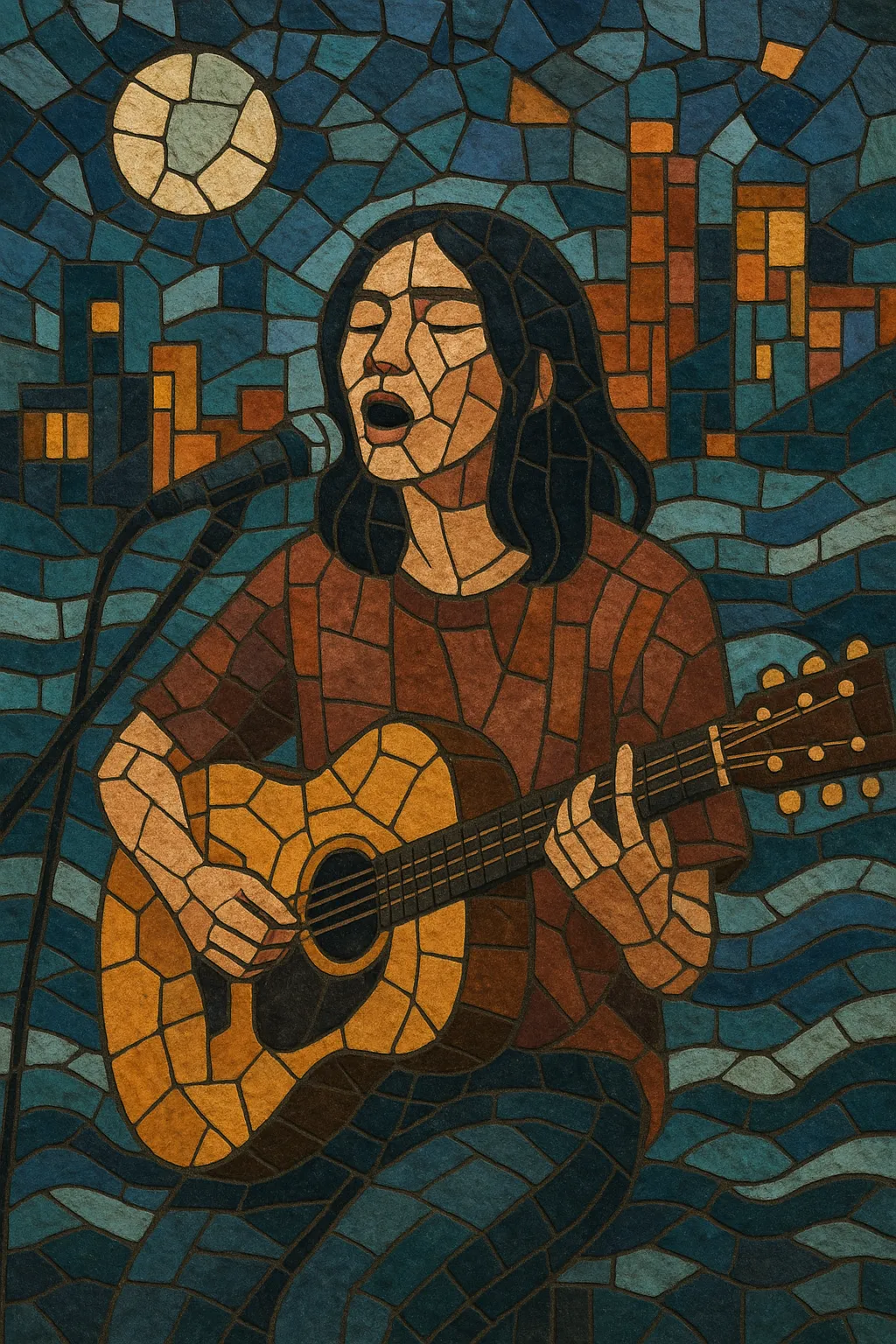Your Taiwanese Indie digging level
0/7
🏆
Sign in, then listen to this genre to level up
Description
Taiwanese indie is a broad, grassroots-driven scene that blends global indie rock/pop aesthetics with local languages, histories, and urban experience.
It ranges from jangly guitar bands and dreamy shoegaze/dream pop, to math-rock intricacy, post-rock expansiveness, and a warm city-pop revival sheen.
Lyrics often alternate between Mandarin, Taiwanese Hokkien, Hakka, and English, reflecting Taiwan’s plural identity and everyday life.
The sound is typically melodic and atmospheric, balancing DIY intimacy with increasingly polished studio craft and a strong live culture centered on festivals and small venues.
History
Origins (1990s)
• Taiwanese indie emerged from the post-campus-folk legacy of the 1980s and the rise of alternative/indie rock worldwide in the 1990s. Grassroots festivals such as Spring Scream (founded in 1995) and small venues provided a stage for DIY bands outside the Mandopop mainstream. Early internet forums and zines helped build communities around non-commercial sounds and multilingual expression.
Consolidation and Venues (2000s)
• In the 2000s, dedicated spaces like The Wall (Taipei), Witch House, and later Revolver became hubs for an expanding live circuit. Independent labels, college radio, and platforms like Indievox enabled releases and ticketing for emerging artists. Bands mixed indie rock and pop with shoegaze, post-rock, math rock, and folk strands, crafting a distinctly Taiwanese indie identity rooted in local storytelling and urban youth culture.
Breakthrough and Diversification (2010s)
• The 2010s saw breakout acts touring Asia and beyond, and recognition at the Golden Melody Awards. Groups such as No Party For Cao Dong, Sunset Rollercoaster, Elephant Gym, and Fire EX. broadened the scene’s range—from melancholic post/alt-rock and mathy intricacy to retro-soulful city-pop hues. Language diversity flourished, with Taiwanese Hokkien and Mandarin coexisting, and lyrics addressing love, alienation, nostalgia, and social currents.
Global Reach and Festivals (2020s–present)
• Showcase events like LUCfest (Tainan), Megaport (Kaohsiung), and Simple Life highlighted Taiwan’s position in the pan-Asian indie network. Streaming and social media accelerated overseas discovery, while collaborations with Japanese, Korean, and Southeast Asian indie circles deepened cross-border ties. The scene remains eclectic and community-oriented, with a steady pipeline of DIY artists, boutique labels, and intimate venues sustaining growth.
How to make a track in this genre
Instrumentation & Sound Palette
• Start with a guitar-bass-drums core; add warm analog/virtual synths for pads and leads. Consider sax or keys for city-pop colors.
• Use chorus, tape delay, and plate/room reverbs on guitars for dreamy or shoegaze textures; cleaner funk tones suit city-pop inflections.
Harmony & Melody
• Favor melodic hooks with extended chords (maj7, 9ths, add9, sus2/4) and occasional modal mixture to evoke nostalgia.
• Explore gentle voice-leading and counter-melodies; for math/post-rock flavors, use open voicings, pedal tones, and layered arpeggios.
Rhythm & Groove
• Mid-tempo grooves (≈80–120 BPM) are common; try danceable, lightly syncopated drums for city-pop vibes.
• For math-rock tinges, weave in odd meters (5/4, 7/8) or metric modulations while keeping sections that resolve to 4/4 for accessibility.
Lyrics & Language
• Write in Mandarin and/or Taiwanese Hokkien; mixing languages is common. Themes: urban coming-of-age, relationships, alienation, nostalgia, and subtle social commentary.
• Keep imagery concrete and relatable; balance introspection with singable refrains.
Production & Arrangement
• Aim for intimate, dynamic mixes: roomy drums, present vocals, and a wide stereo field for guitars/synths.
• Arrange in waves—build from sparse verses to layered choruses; incorporate instrumental interludes for post-rock or dream-pop atmosphere.
Performance Tips
• Tight ensemble dynamics and tasteful effects switching are key. Use click + backing pads sparingly to retain a live, human feel.
• Emphasize audience connection and storytelling; indie authenticity often matters as much as virtuosity.


